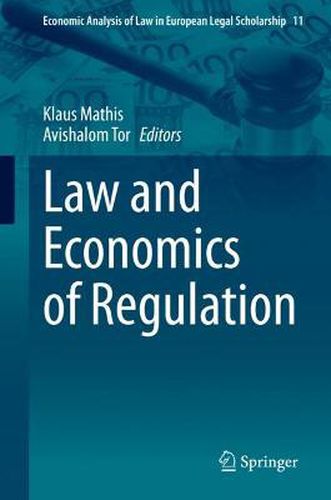Readings Newsletter
Become a Readings Member to make your shopping experience even easier.
Sign in or sign up for free!
You’re not far away from qualifying for FREE standard shipping within Australia
You’ve qualified for FREE standard shipping within Australia
The cart is loading…






This title is printed to order. This book may have been self-published. If so, we cannot guarantee the quality of the content. In the main most books will have gone through the editing process however some may not. We therefore suggest that you be aware of this before ordering this book. If in doubt check either the author or publisher’s details as we are unable to accept any returns unless they are faulty. Please contact us if you have any questions.
This book explores current issues regarding the regulation of various economic sectors, theoretically and empirically, discussing both neoclassical and behavioural economics approaches to regulation. Regulation has become one of the main determinants of modern economies, and virtually every sector is subject to general laws and regulations as well as specific rules and standards. A traditional argument to justify regulatory interventions is the promotion of public interests. Fixing markets that lack competition, balancing information asymmetries, internalising externalities, mitigating systemic risks, and protecting consumers from irrational behaviour are frequently invoked to complement the invisible hand of the market with the visible hand of the state.However, regulations can lead to unintended consequences, and serve the interests of powerful private interest groups rather than the public interest and social welfare. In addition, new insights from behavioural economics question the traditional regulatory approaches, most prominently in attitudes towards consumers. Furthermore, digitalisation and technological innovation in general present new challenges in terms of both the type of regulation and the regulatory process.Part I of this book discusses various theoretical approaches to the economic analysis of regulations, while Part II looks at specific applications of the law and economics of regulation.
$9.00 standard shipping within Australia
FREE standard shipping within Australia for orders over $100.00
Express & International shipping calculated at checkout
This title is printed to order. This book may have been self-published. If so, we cannot guarantee the quality of the content. In the main most books will have gone through the editing process however some may not. We therefore suggest that you be aware of this before ordering this book. If in doubt check either the author or publisher’s details as we are unable to accept any returns unless they are faulty. Please contact us if you have any questions.
This book explores current issues regarding the regulation of various economic sectors, theoretically and empirically, discussing both neoclassical and behavioural economics approaches to regulation. Regulation has become one of the main determinants of modern economies, and virtually every sector is subject to general laws and regulations as well as specific rules and standards. A traditional argument to justify regulatory interventions is the promotion of public interests. Fixing markets that lack competition, balancing information asymmetries, internalising externalities, mitigating systemic risks, and protecting consumers from irrational behaviour are frequently invoked to complement the invisible hand of the market with the visible hand of the state.However, regulations can lead to unintended consequences, and serve the interests of powerful private interest groups rather than the public interest and social welfare. In addition, new insights from behavioural economics question the traditional regulatory approaches, most prominently in attitudes towards consumers. Furthermore, digitalisation and technological innovation in general present new challenges in terms of both the type of regulation and the regulatory process.Part I of this book discusses various theoretical approaches to the economic analysis of regulations, while Part II looks at specific applications of the law and economics of regulation.